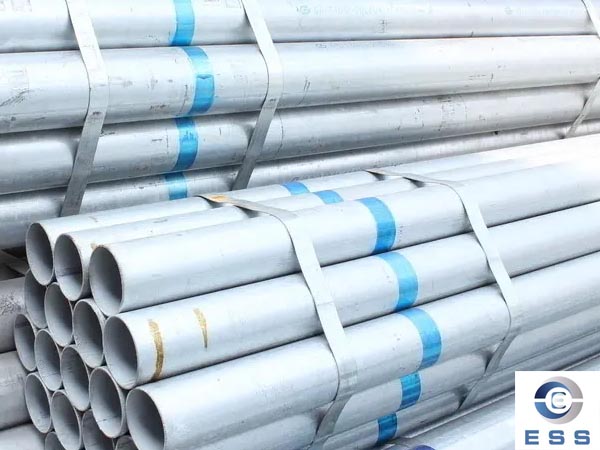1. Essential difference
Cold galvanizing, also known as electro-galvanizing, is to use electrolytic equipment to deoil and pickle the workpiece into a solution of acid salt, and connect the negative electrode of the point solution equipment, and place a zinc plate on the opposite side of the workpiece to connect to the electrolytic equipment. The positive electrode, turn on the power supply, and use the current to move from the positive electrode to the negative electrode, which will deposit a layer of zinc on the workpiece.
Hot-dip galvanizing (galvanized steel tube) is also called hot-dip galvanizing. It is a method of immersing steel hooks in molten zinc to obtain a metal coating, you can bring it up.

2. Principle difference
Cold galvanizing uses chemical principles to separate zinc alloys into zinc ions, which are attached to the surface of steel. Generally, the zinc layer is thin, and steel is easily corroded in general environments. Generally, cold galvanizing is used for anti-corrosion of various steel products and structures. The amount of galvanizing of cold galvanizing is very small, only 10-50g per square meter.
As we all know, the mechanism of zinc's resistance to atmospheric corrosion includes mechanical protection and electrochemical protection. Under atmospheric corrosion conditions, the surface of the zinc layer has ZnO, Zn(OH)2 and basic zinc carbonate protective films, which slow down the corrosion of zinc to a certain extent. The protective film (also known as white rust) is damaged and a new layer is formed. When the zinc layer is seriously damaged and endangers the iron matrix, zinc produces electrochemical protection for the matrix. The standard potential of zinc is -0.76V, and the standard potential of iron is -0.44V. When zinc and iron form a microbattery, zinc is dissolved as an anode. , the iron is protected as a cathode. The formation process of the hot-dip galvanized layer is the process of forming an iron-zinc alloy between the iron matrix and the outer pure zinc layer. The iron-zinc alloy layer is formed on the surface of the workpiece during hot-dip plating, which can make the iron and pure zinc layer very close. good combination.
3. Appearance difference
Hot-dip galvanized looks rougher in appearance, while cold-dip galvanized is brighter and smoother.
The appearance of hot-dip galvanizing is not as delicate and bright as cold galvanizing, but the thickness of the zinc layer is dozens of times that of cold galvanizing. The anti-corrosion performance is that the electroplating hot-dip galvanized layer is thick, and the surface of the coating generally has sequins that can be recognized by the naked eye, and the surface can be touched by hand. It feels a certain roughness and has a bright silver appearance. When the temperature of hot-dip galvanizing production is too high, the appearance is mainly gray, and the small pieces of the zinc-iron alloy layer will fall off when knocked.













 Eastern Steel Manufacturing Co.,Ltd not only improve product production and sales services, but also provide additional value-added services. As long as you need, we can complete your specific needs together.
Eastern Steel Manufacturing Co.,Ltd not only improve product production and sales services, but also provide additional value-added services. As long as you need, we can complete your specific needs together.










